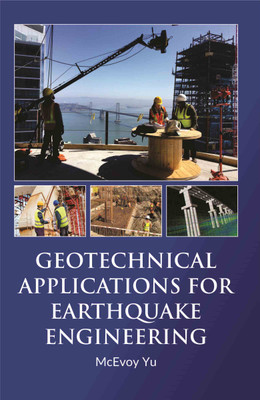Geotechnical Applications for Earthquake Engineering - Geotechnical Applications for Earthquake Engineering(Hardcover, McEvoy Yu)
Quick Overview
Product Price Comparison
If earthquake risk is significant, it is important to consider seismic effects on structures and on earthworks and natural slopes. Foundation bearing capacity reduces under cyclic loading and piles can be subjected to significant lateral and tensile loads absent under static conditions. Retaining structures are subjected to additional forces under earthquake actions which can significantly increase strength and/or embedment requirements. Seismic design of earthworks and natural slopes normally involves not only failure prevention, but also evaluation of the residual displacements expected under the design groundmotion. Evaluation of the liquefaction potential and cyclic mobility of soil deposits is critical for the design of stable structures and other facilities. Liquefaction can affect a broad range of soils in many geological environments and affects not only engineered structures, but can trigger landslides. Various techniques have been developed to reduce liquefaction hazard. These techniques mainly involve either increasing the strength and stiffness of the soil deposit or avoiding the accumulation of excess porewater pressure through drainage improvements. Surface soil deposits can significantly modify the amplitude and frequency characteristics of earthquake ground motion, often leading to amplification of the motions at the ground surface with respect to the underlying rock. This book will be of immense help to all those contemplating to acquire an expert knowledge of earthquake geotechnical engineering.


